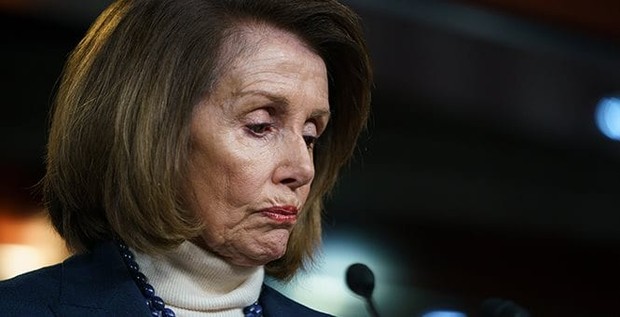
In December 2018, the soon-to-be Speaker of the House, Nancy Pelosi, was busy making changes in the House rules for the incoming 116th Congress. She was actually setting the stage for her anticipated impeachment of President Trump. At the time, The Conservative Treehouse’s “Sundance” wrote, “Remember when we warned [November 8th, 2018] that a convergence of left-wing groups, activists, DNC donors and specifically the Lawfare team, would align with (and meet) incoming Democrat leadership to construct a road-map for the “resistance” priorities? Well, exactly that planned and coordinated outcome is visible as incoming Speaker of the House Nancy Pelosi presents her new rules for the 116th congress.”
(Note: Sundance points out the details of the relevant rules changes here.)
House Democrats are currently using those new rules to subvert historic processes and prepare the articles of impeachment.
Although impeachment is rare, on the few occasions one has been initiated, a full house vote has been taken. However, this is not mandatory. Pelosi has not held a full house vote and there’s a reason for that. A formal vote would give the minority enforceable rights. Without a full vote, the articles of impeachment “can be drawn up without any participation by the minority. This was always the plan that was visible in Pelosi’s changed House rules.”

Once the articles are drawn up and passed out of committee, they will come before a full house vote. “Once Pelosi achieves a vote of passage on any single article President Trump is considered impeached.” Pelosi has deliberately timed the whole sequence of events so that Democrats will have the current two-week recess to return to their districts to convince their constituents that impeachment is necessary. According to Sundance:
There are 31 House districts currently held by Democrats which President Trump won in 2016; Pelosi is giving those members an opportunity to make their impeachment case to their constituents now, but failure to support the effort is likely not optional for all except a few of the most tenuously vulnerable. House Majority Leader Steny Hoyer and Majority Whip James Clyburn will assemble enough votes for impeachment.
While those house members are explaining to their constituents, back in DC the committee work on the articles will collate. On Friday afternoon, House Intelligence Committee Chairman Adam Schiff, Oversight Committee Chairman Elijah Cummings, and Foreign Affairs Committee Chairman Eliot Engel, issued a subpoena demanding a slew of Ukraine-related documents from Secretary of State Mike Pompeo by Oct. 4th. The committees also scheduled depositions with five State Department officials between Oct. 2 and Oct. 10.
Notice that with the rule changes the minority will not be participating in these depositions. The Republicans will likely have no idea what is happening therein.
Fox News’ Chad Pergram explains that “the subpoenas are part of a two-pronged strategy by Democrats. Get the information to help tailor the articles of impeachment, or convert a refusal to comply into an impeachment article itself.” Why does that not surprise us?
When Congress reconvenes, the Articles of Impeachment will be ready. Sundance says that for the sake of optics, Pelosi has to make it appear that Republicans played a role in the process. He writes:
She will likely have mid to late October destined for the committee chairs to have committee debate on their pre-assembled articles.
Democrats are keen optical strategists and narrative engineers; and as you know they coordinate all endeavors with their media allies. The narrative assembly and usefulness by media to drive a tactical national political message will hit heavily in this mid/late October time-frame. This will allow the executive suites (media) to capture/stir-up maximum public interest and make the most money therein.
Then, once Pelosi is certain the maximum political benefit has been achieved, she will announce the date for the Full House Vote on Articles of Impeachment. We can be certain the date will be filled with maximum drama and made-for-tv effect complete with Speaker Pelosi bringing back the big gavel for a grand presentation and a full house vote.
Pergram breaks down the math:
The current House breakdown is 235 Democrats, 199 Republicans, and one independent: Rep. Justin Amash, I-Mich. To pass anything in the House, 218 yeas are needed.
That means Democrats can only lose 17 votes from their side and still have enough to pass an article of impeachment. Amash has endorsed impeachment, so let’s say the magic number is actually 16. If the president is to be impeached, that means Democrats could have 15 of their own voting for articles of impeachment while representing a district which Trump carried in 2016.
A House floor vote to impeach the President is kind of like an indictment, codified in Article I, Section 2 of the Constitution. If the House votes to impeach, Article 1, Section 3 of the Constitution sends the article(s) to the Senate for a trial presided over by Chief Justice of the United States John Roberts.
Pelosi has been preparing for this since Election Day. Every detail was carefully planned, except for the crime. She had hoped Mueller would have provided one, but no worries, she found one.
However, she does face several headwinds. For one thing, whistleblower mania is folding faster than a house of cards.
Many of the whistleblower’s claims and the interpretations spun by the eager liberal commentators have been blown up.
First, we were told there were eight references to Biden during President Trump’s July 25th conversation with Ukrainian President Volodymyr Zelensky. Turns out there were three. And they were all found in two sentences.
Next, the media breathlessly reported that a ‘promise’ had been made, there was a quid pro quo. There was no promise, no quid pro quo.
My colleague Nick Arama reported (here) two more whistleblower claims which have been debunked. The complaint said that Counselor to the State Department Ulrich Brechbuhl was on the Trump/Zelensky call. He was not.
The document also claimed that “by mid-May, U.S. diplomat Kurt Volker sought to “contain the damage” from Trump attorney Rudy Giuliani’s outreach to Ukraine.” Text messages from Volker to Giuliani have since shown that to be false. Even ABC News has acknowledged this. They reported, “The State Department has confirmed that Volker put Giuliani in touch with Zelensky adviser Andriy Yermak at Yermak’s request.”
Last night The Federalist’s Sean Davis reported that days before the whistleblower submitted his complaint, the intelligence community “secretly eliminated the requirement that whistleblower complaints contain only direct, first-hand knowledge of wrongdoing allegations.” This change allowed the whistleblower to file a complaint based on hearsay information.
Right about now, Republicans could use a nice, devastating Inspector General report showing FISA abuse by the FBI. It’s been two weeks since DOJ Inspector General submitted his report to the DOJ for classification. Hopefully, it will be released this week. President Trump, as well as the rest of us, need a win.













Join the conversation as a VIP Member